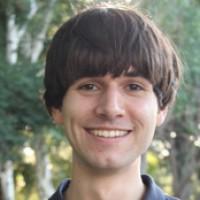Sam Totorica won the Jack Eddy Posdoctorcal Fellowship
By HED
Fellowship overview:
The Jack Eddy Postdoctoral Fellowship is sponsored by the NASA Living With a Star program and is designed to train the next generation of researchers in the emerging field of Heliophysics. John "Jack" Eddy (1931-2009) was a pioneering solar researcher, and was honored with the debut of the Jack Eddy Postdoctoral Fellowship in 2009. The fellowship will support me for postdoctoral research at Princeton University, hosted by Professor Amitava Bhattacharjee.
Heliophysics embraces all science aspects of the Sun-Earth connection, and includes many of the basic physical processes that are found in our solar system, the laboratory, and throughout the universe. These processes generally involve the interactions of ionized gases (plasmas) with gravitational and electromagnetic fields, and with neutral matter. The physical domain of interest ranges from deep inside the Sun to the Earth's upper atmosphere, to the magnetospheres of the other planets, and extends out to the boundary between the solar wind and interstellar medium.
My project:

The main goal of the Living With a Star program is to study the aspects of the Sun and space environment that impact life and society on Earth. With our modern society becoming increasingly dependent on technology that is vulnerable to effects originating in the space environment, understanding space weather is one of the most important aspects of the Living With a Star program. Our daily life is extremely dependent on satellites, as we rely on them for communication, weather forecasts, military surveillance, and GPS navigation. Energetic particles and radiation from the sun can damage these satellites, alter their orbits, and interfere with our ability to communicate with them. Disturbances in the magnetosphere caused by shock waves in the solar wind can also produce energetic particles, as well as lead to large currents in Earth’s upper atmosphere that could potentially induce damaging currents on the power grid and lead to widespread power outages.
One of the most critical problems in space weather is understanding the origin of the energetic particles associated with solar activity and the interaction of the solar wind with Earth’s magnetosphere. Energetic particles created in explosive events such as solar flares, coronal mass ejections (CMEs), and geomagnetic storms can damage satellite electronics, disrupt radio communications, and pose health risks to astronauts and passengers on commercial aircraft. However after decades of study the production of these energetic particles remains mysterious. Particle acceleration in these systems is believed to be the result of the dynamics of magnetized plasmas, and in particular magnetic reconnection and collisionless shock waves. These are fundamental plasma processes that involve highly complex and nonlinear physics. The interplay between electromagnetic fields, plasma waves, and nonthermal particles requires a fully relativistic, electromagnetic, and kinetic treatment, while the large separation between microscopic and global scales requires the consideration of a large dynamic range.
Only recently have state-of-the-art supercomputers and sophisticated particle-in-cell simulation algorithms reached a level that is allowing the study of magnetic reconnection and collisionless shocks in realistic configurations, three dimensions, and large systems sizes that can capture the interplay between the global scales and the microscopic kinetic physics that is critical for the collisionless plasmas characteristic of the space environment. My research will take advantage of these developments to yield new insight into these physical processes which are thought to drive the most important events in space weather, and in particular how these processes accelerate particles to high energies. The new understanding gained will enable the development of accurate models for solar and geomagnetic activity to allow us to predict future space weather events and thereby mitigate their potential destructive impact on life and society on Earth.
